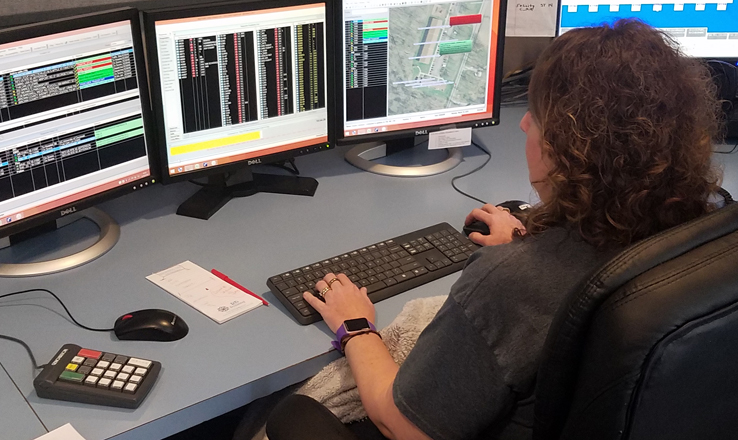By Wayne Gates –
The Brown County Communications Center is a busy place.
In 2017, 911 operators processed 16,507 calls. That’s an average of 45 calls per day.
Most of those calls are for medical help. Fire and EMS runs accounted for 9158 calls, or 55 percent. The majority of the others were for law enforcement.
“We have very highly trained staff. They are emergency medical dispatched trained and are all certified public safety telecommunicators,” said Brown County Communications Center Director Barbara Davis.
“We strive every day to meet or exceed state standards.”
Those standards include having at least two dispatchers on duty 24 hours a day.
State law also requires that ninety percent of 911 calls are answered within ten seconds and 95 percent in twenty seconds. The Brown County 911 dispatchers do much better than that.
According to statistics that are required to be kept by the state, 97 percent of 911 calls in Brown County were answered in one second and 99.9 percent of them were answered in three seconds.
So what happens in the dispatch center when the phone rings?
Davis said the process begins with the basics, including finding out where the person is and the nature of the emergency so the proper responders can be notified.
After that, if it’s a medical emergency, the dispatchers themselves are prepared to help immediately.
“The 911 dispatcher becomes the true first responder by telling someone how to control bleeding, do CPR, deliver a baby or whatever else they can do to help,” Davis said.
All operators are supplied with scripted and medically approved responses to each type of medical emergency.
“We work under a medical director so we help them until help arrives. If somebody is having a heart attack, for example, we have pre-arrival (of EMS) instructions that are read word for word to help the person in need,” Davis said.
She also explained the timeline of how responders are notified and sent to someone who needs help.
“From when they call 911, we get the call dispatched within one minute,” Davis said.
“From there, it starts a timer. At five minutes, if we haven’t heard from anyone, we ask that dispatched unit to acknowledge their run. If we don’t hear anything, we drop another tone. We wait another two minutes and if we still haven’t heard anything, we dispatch mutual aid, which means calling another department.”
One big change that is coming to the Brown County Communications Center, is next generation 911, which is intended to allow citizens to share photos, video and texts with 911 operators.
Currently, 77 percent of calls to the dispatch center come from cell phones. Another seven percent come from telephones through the internet. Only 16 percent of calls came from landlines in 2017.
Davis said that the State of Ohio is working on a statewide standard for next generation 911. Since new law has to be written and then the system conceived and constructed, Davis doesn’t expect it to happen until 2020.
When it does, the impact to Brown County will be huge.
“It’s going to cost us hundreds of thousands of dollars locally,” Davis said.
“They are going to bring it to our door. We will have to figure out how to connect to it and pay for the necessary equipment.”
The communications center is currently funded by a 1/4 cent sales tax and a 25 cent tax on cellular phones. Last year, the phone tax raised $90,000, which is a fraction of the total budget.
Davis said that 911 operators perform a difficult job that can sometimes take a heavy toll.
“Vicarious trauma is one thing that dispatchers deal with. That means that while they are not directly physically present or affected by the trauma, it still affects them. They hear the domestic violence calls where people are getting hit and children are screaming,” Davis said.
She added that help was available to operators who need it.
“ We have peer counseling for them and Deanna Vietze from the (Brown County Board of Mental Health and Addiction Services) is working with us on a program to help them deal with vicarious trauma,” Davis said.
But the work isn’t all bad. Davis said that times when operators can help with successful CPR or a baby delivery also come along.
“Those good moments where you help save a life helps balance out the stress of the job. It feels good that you can help someone help themselves,” she said.
The 911 system has been around in some form or another for fifty years. Davis said that people have come to expect a certain standard.
“It doesn’t matter if you are calling from Georgetown near Washington, D.C. or from Georgetown, Ohio. You expect to get the same kind of service and you should,” Davis said.
“I’m very proud of our staff and how hard they work every day to meet the standards and take care of the public.”

